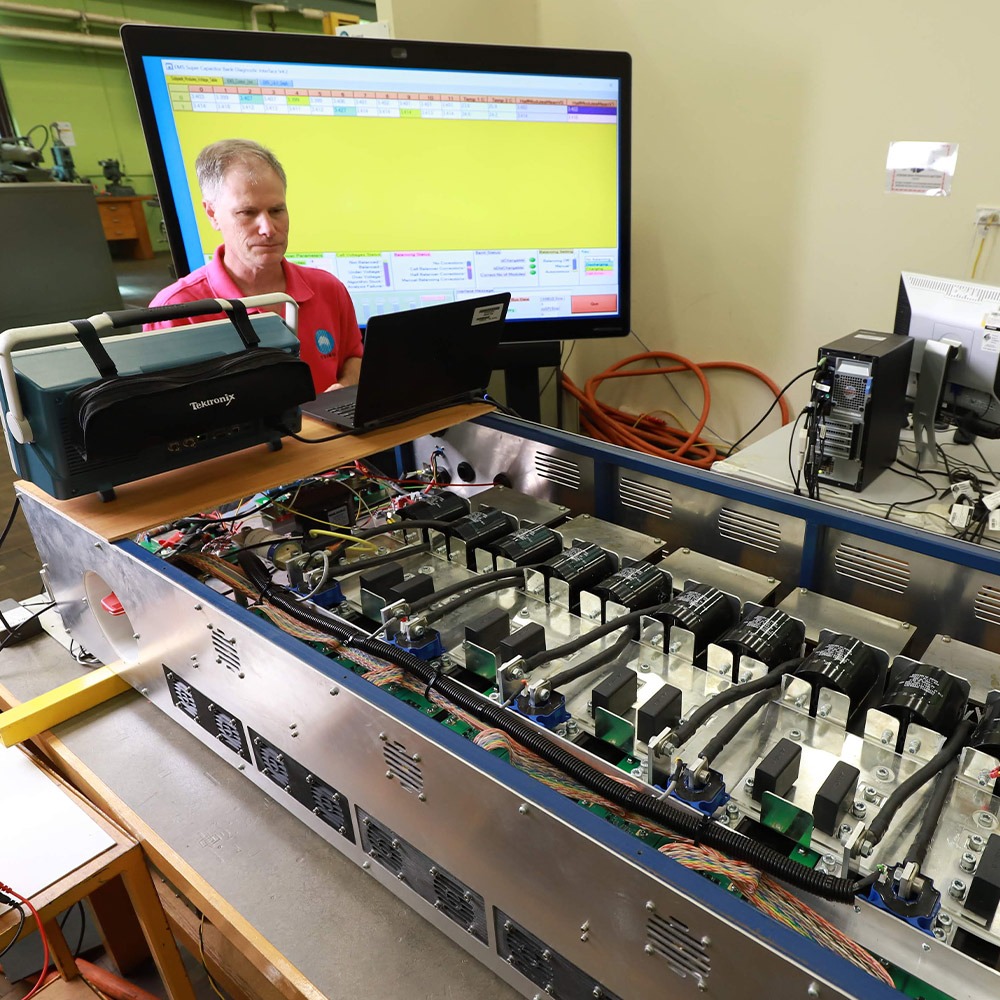11 Jun Power and Propulsion | Supercapacitor energy management system
Power and Propulsion
Supercapacitor energy management system
CRRC QINGDAO SIFANG ROLLING STOCK RESEARCH INSTITUTE CO.,LTD (Hao Yufu) / CSIRO (Howard Lovatt)

Research summary
This project involved developing a prototype energy management system using commercially available supercapacitors to enable the application of catenary-free trams. This approach would eliminate overhead wires to power the trams, instead requiring an onboard energy storage system with high enough energy density to support travel between stations and high enough power density to enable rapid charging and discharging.
Start/end date
1 July 2014 to 7 April 2020 (Stage 1 and 2)
Total contracted budget (including in-kind)
$4,583,179
Key achievements
- Commercial Lithium Graphite battery/super-capacitor hybrid cells were found to be suitable for on-board light rail energy storage for catenary-free light rail where fast charge and discharge is required, along with a higher energy density than traditional supercapacitors.
- In conjunction with the hybrid cells, new semiconductors, particularly high-powered insulated-gate bipolar transistors made replacement of a traditional catenary system feasible.
- Control systems developed by CSIRO enabled control of charging, discharging and battery balancing. The integration of near field communications into the control system enabled the state of the system to be communicated, for charging purposes, as the train approaches the platform.


